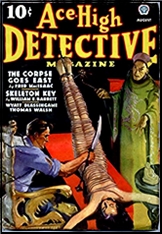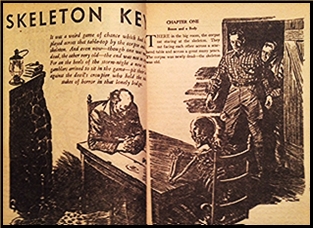Thu 25 Jul 2019
Pulp Stories I’m Reading: ERLE STANLEY GARDNER “Night Birds.”
Posted by Steve under Pulp Fiction , Stories I'm Reading[9] Comments
ERLE STANLEY GARDNER “Night Birds.” Novelette. El Paisano, aka The Roadrunner #1. Argosy Weekly, August 5, 1933. Probably never reprinted.
This is the first of five recorded adventures of yet another of Erle Stanley Gardner’s series characters he created for the pulp magazines in the 20 and 30s. Known as both El Paisano and the Roadrunner, and yet no other name, he is a man of mystery, flitting across the Mexican border and back with ease, invariably leaving dead villains, gang leaders and various henchmen in his wake.
What makes him such a formidable foe is that he can see in the dark far better than most men. Whether better able to see unsavory characters with knives waiting for him in the night, or young beautiful women he can then follow across darkened rooms without them knowing, it makes his tales of adventure and narrow escapes all the more interesting.
Being the first time any of Gardner’s readers had met this new hero, he spends considerable time making his abilities clear, but not to the expense of the story, which consists of a dead man in an alley, pursuit, rescue (in an inadvertent way) by a slip of a girl with her mind focused on a suitcase filled with a fortune in stolen money.
It all ends well, but only once the young slip of a girl is fully convinced that the Roadrunner is on her side, which she finally does. There’s otherwise not a lot of depth to this tale, but I certainly wouldn’t mind reading another.

